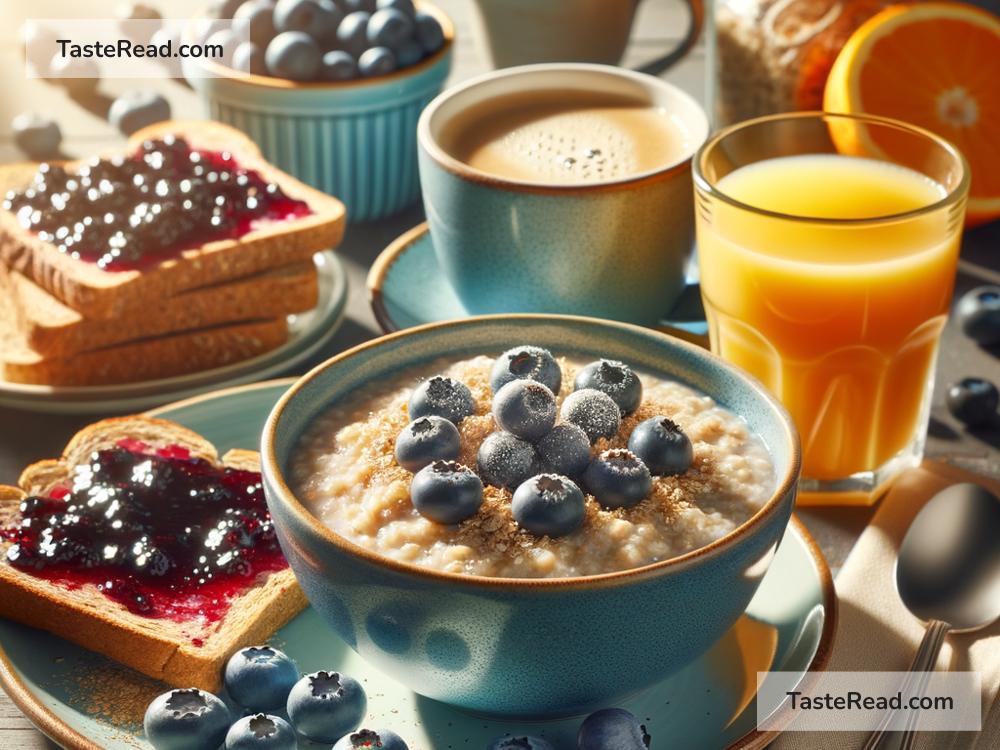How Blueberries Became a Breakfast Staple
Blueberries, those tiny, vibrant spheres of sweetness, are one of the most beloved fruits today. They’re found in pancakes, muffins, smoothies, cereals, yogurt bowls, and even on their own as a fresh snack. But have you ever wondered how blueberries earned their spot on the breakfast table? In this article, we’ll explore how this humble fruit grew from nature’s wild gift to one of the most popular breakfast staples in the world.
The Origins of Blueberries
Blueberries are native to North America. Indigenous peoples, such as Native Americans, were the first to use these berries in their diets. They would eat blueberries fresh, dry them for preservation, or create dishes like “pemmican,” a mixture of dried berries, meat, and fat. These communities also appreciated blueberries for their medicinal qualities, using them to treat coughs and strengthen immunity.
When European settlers arrived in North America, they quickly noticed the abundance of wild blueberries and adopted them into their diets. In the early days, blueberries mainly grew in the wild, and collecting them could be time-consuming. For many years, blueberries were considered more of a seasonal treat than a regular food item.
Agriculture Revolution: Cultivating Blueberries
Blueberries remained a wild fruit until the early 1900s, when scientists began to study how to domesticate them. A key figure in this process was Frederick Coville, a botanist who discovered which soil conditions blueberries needed to thrive. Soon after, Elizabeth White, the daughter of a cranberry farmer, teamed up with Coville to cultivate the first commercial blueberry bushes.
By the 1920s, cultivated blueberries were introduced to farmers and began appearing in stores across the United States. Suddenly, blueberries were more accessible than ever before. They were no longer dependent on seasons and wild harvesting, thanks to organized farming. As their availability grew, so did their popularity.
The Role of Breakfast Culture
In the 20th century, breakfast became a very important part of daily life in many Western countries. As food companies introduced cereals, bread products, and convenience foods, people started experimenting with ways to make breakfast tastier and healthier. Blueberries fit perfectly into this shift toward nutritious mornings.
The rise of pancakes and muffins as breakfast favorites also paved the way for blueberries to shine. Blueberry pancakes and blueberry muffins quickly became classics. Their sweetness and bright flavor paired beautifully with batter or dough, creating dishes people loved to wake up to.
Cereal companies also played a massive role in making blueberries a breakfast staple. They began marketing dried blueberries or blueberry-flavored clusters in cereals. This made blueberries a part of quick and easy breakfasts for busy families, cementing their spot in morning routines.
Health Benefits Fuel the Trend
One key reason blueberries became a major breakfast food is their incredible health benefits. Rich in vitamins, antioxidants, and natural sugars, these berries are known as a “superfood.” Studies have shown that they help improve brain function, reduce inflammation, and support heart health.
In the late 20th and early 21st centuries, as people became more interested in eating healthier, blueberries gained even more attention. Smoothies, yogurt bowls, and oatmeal—usually topped with fresh blueberries—became popular choices for health-conscious individuals. People loved combining “superfoods” like blueberries, nuts, seeds, and oats to start their day with a nutritious punch.
Blueberries in Modern Breakfasts
Today, blueberries are everywhere. Walk into any supermarket, and you’ll find them fresh, frozen, dried, or even in pre-packaged dishes. Restaurants include blueberries in their breakfast menus, offering options like blueberry waffles, parfaits, and even savory dishes with blueberry sauce.
The versatility of blueberries is one reason they remain so popular. Whether eaten raw or cooked, they add sweetness without artificial flavors. They’re also incredibly convenient. You don’t need to peel, pit, or chop them—just rinse and enjoy.
Moreover, the rise of social media has helped blueberries stay trendy. Instagram and Pinterest are full of photos of beautiful breakfast bowls, smoothies, and baked goods that feature blueberries. Their striking blue-purple color makes dishes look appealing and vibrant, encouraging people to give them a try.
The Global Spread of Blueberries
Although blueberries were originally native to North America, they’ve become global favorites. Cultivation has expanded to countries like Chile, New Zealand, and Australia. As international markets grow, blueberries have reached breakfast tables all over the world.
People in Europe, Asia, and beyond now add them to pastries, pancakes, yogurt, and more. Regardless of how they’re consumed, one thing is clear: blueberries have become universally loved.
Conclusion
From their wild beginnings to their place in breakfast bowls worldwide, blueberries have traveled a long journey. Their delicious taste, nutritional value, and versatility have made them a breakfast superstar. Whether you enjoy them in a fluffy muffin, sprinkled over oatmeal, or blended into a smoothie, blueberries are here to stay. So the next time you enjoy blueberries for breakfast, take a moment to appreciate the story of how this tiny fruit became such a big deal.


